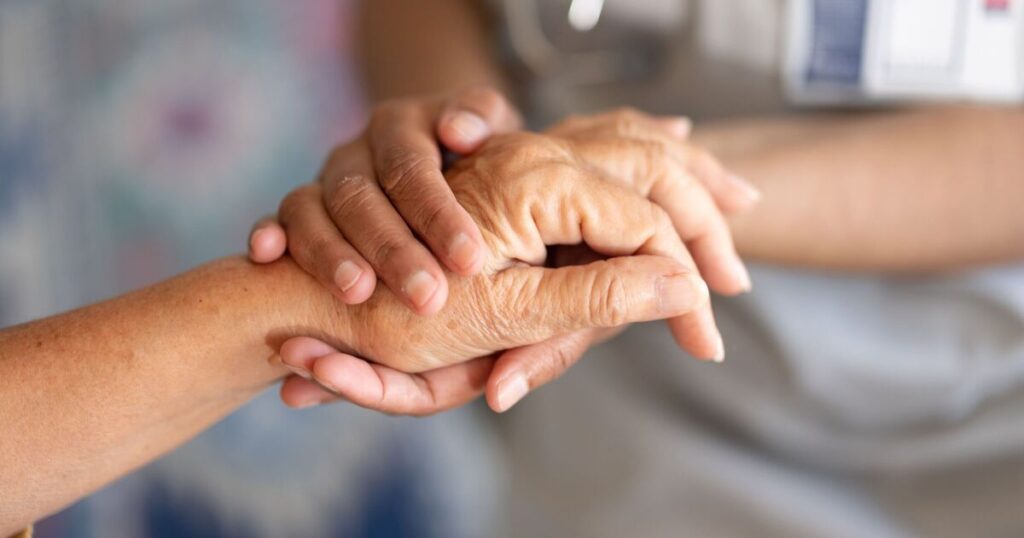
A hospice nurse has revealed common behaviours in people as death approaches. Maria Sinfield is a nurse for the end-of-life charity Marie Curie and has witnessed how patients begin to act in their last days.
It is critical to remember that everyone’s experiences towards the end of life can be different, but having some understanding of what’s to come can make it easier for grieving families.
Ms Sinfield outlines the seven following signs that could mean the end is almost here. Some physical signs displayed by those nearing the end can appear worrying, but you must accept that it’s all part of the natural process.
-
Slowing down
The hospice nurse explained how people become “really” slow and fatigued in their last weeks or days. She explained how many will store their energy for doing simple tasks, such as having a chat or eating a meal.
2. Eating less
People often eat less at the end of life due to a combination of factors, including the body’s reduced energy needs, a diminished appetite, and physical discomforts. Ms Sinfield explained to MailOnline, “Often the person is not using as much energy, they are not being as active, so they need less food and drink.” The nurse added that this often becomes a key “concern” for families.
3. Inability to regulate body temperature
Towards the end of life, individuals often struggle to regulate their body temperature due to a decline in the body’s ability to maintain core temperature. The hospice nurse explained how as the person’s body starts to slow down, so does their circulation which can lead to this sign.
4. Changes in breathing pattern
This sign often occurs as a result of the body’s decreasing energy levels and organ systems shutting down. Sinfield shared, “The breathing changes may be so small and gentle the family may not notice the patient has stopped breathing for longer periods”.
5. Rattling or secretions noises
Noisy breathing, often called the “death rattle,” occurs at the end of life due to a build-up of secretions in the airways, making it difficult for the person to cough and clear fluids. Sinfield explained that these noises are not causing the person who is dying any distress or pain. Furthermore, changing the person’s position could help address this.
6. A strong desire to say or do something
Many individuals feel compelled to address any unresolved issues or conflicts, especially with family members. This might involve apologising, seeking forgiveness, or making amends for past actions. Sinfield said: “I recall one particular patient who was upset because they needed to speak to a family member who they’ve not spoken to for some time, but we were able to get that family member to them.
“They were really distressed prior to that and seeing the family member really made a difference, just to know that person was there.”
7. Feeling confused
Confusion at the end of life, including disorientation and delirium is common, and is often due to a combination of physiological changes, medication side effects, and underlying medical conditions. As the body slows down, changes in brain chemistry, oxygen levels, and electrolyte balance can lead to confusion. Ms Sinfield added, “Sometimes confusion can happen when someone has been deep asleep. In those last few hours that person could have lost consciousness, and then wake up from that, because that’s what naturally happens, and then wake up in what seems like a strange environment.”
She explains that symptom management is key to ensure a person is comfortable, and this extends beyond medication but also to emotional support.
Marie Curie has a free support line available to anyone with an illness who are likely to die from it, or those close to them. They offer everything from symptom management to bereavement.
 Latest World Breaking News Online News Portal
Latest World Breaking News Online News Portal






